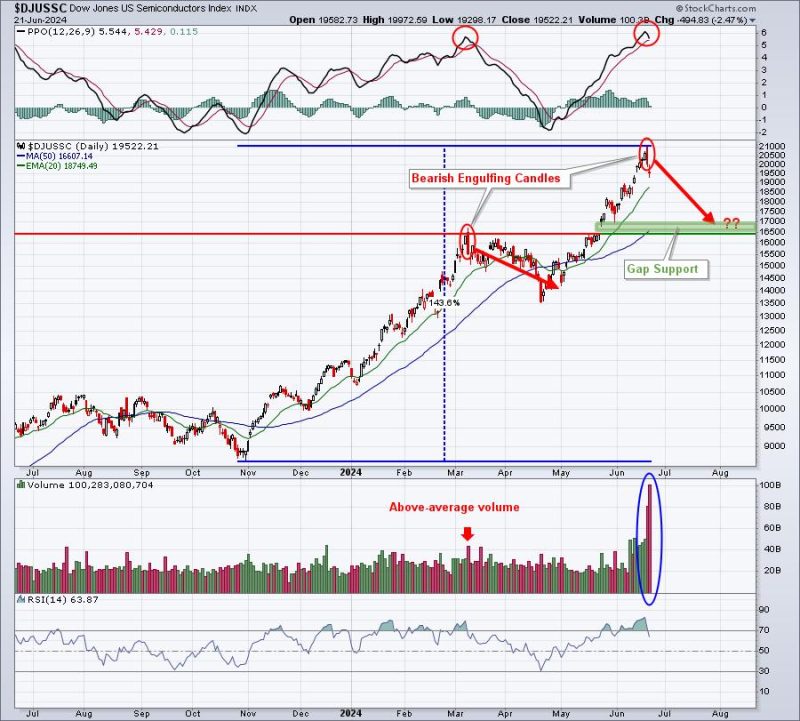Every economic cycle has its winners and losers, and within sub-cycles, the same is true. Recently, we’ve seen a surge in the tech sector, specifically within the market of semiconductors. Through a flood of demand generated by technological advancements and digitalization trends propelled by the COVID-19 pandemic, semiconductor companies have seen their prospects, and thus their stocks, rising. But, despite the rosy picture, the sector seems topped out, which may mean the tide has turned for these high flyers. Many investors are now searching for the next opportunity for substantial gains, and it may lie outside the realm of semiconductors.
Remarkably, the industry’s growth has been the result of several converging factors. New technological advancements, a surge in demand for faster computing, and broader applications of artificial intelligence across industries have driven an insatiable need for semiconductors. Accordingly, companies that design, manufacture, and sell semiconductors have been the beneficiaries of an exceptional financial windfall.
However, history has proven that nothing grows forever. The golden era of exponential growth for semiconductor stocks appears to have plateaued, as the market seems to be saturated with existing solutions and slightly hesitant to leap for the latest and greatest, perhaps due to pricing or perceived lack of differentiation. Alarmingly for would-be investors, this forms an investment climate that lacks the vibrant dynamism required for bumper returns.
There is a key reason behind this topping. As with most sectors that have seen exponential growth, the pricing of stocks in the industry already factors in the existing demand and is heavily influenced by the anticipation of future growth. When that anticipated growth starts to wane and near its limit, the stock prices also start to peak and form a topping formation.
Additionally, the mounting geopolitical tensions and global chip shortage have contributed to the cooling down of the semiconductor market. Analysts warn about the continuation of these shortages, affecting production rates and the global supply chain, subsequently causing a slowdown in this sector.
Consequently, while some investors might continue to hang their hopes on the future of this industry, others are beginning their search for the next big thing. Several alternative sectors hold potential for substantial investment returns.
Consider the clean energy sector, for instance. With governments, consumers, and organizations increasingly pushing towards more sustainable practices worldwide, renewable energy companies have recently garnered substantial attention. Solar, wind, and battery tech companies, along with those contributing to sustainable infrastructure and development, hold strong potential for growth in the coming years.
Additionally, biotech and healthcare sectors hold promise due to accelerated research and development, driven by the COVID-19 pandemic and a global focus on health security. Finally, the rise in remote work and learning, coupled with the explosion of streaming content, have placed the spotlight firmly on cloud computing, telecommunication, and digital entertainment industries as future growth arenas.
Prudent investors should thus review their portfolios to assess the continued weightage of semiconductor stocks and consider diversifying into alternatives for opportunities elsewhere. Novice investors without developed portfolios could explore initial investments in these up-and-coming sectors to capitalize on expected future growth.
Thus, while the semiconductor sector has been a real boon for the tech industry and investors over the past cycle, the current climate suggests that its best times may be behind it, at least for now. As proven time and again, flexibility and diversification across industries remain the keys to successful investing in the long run.




